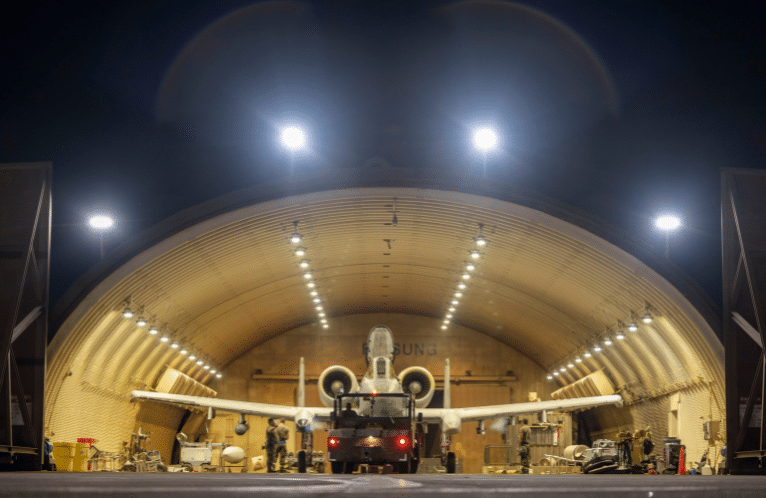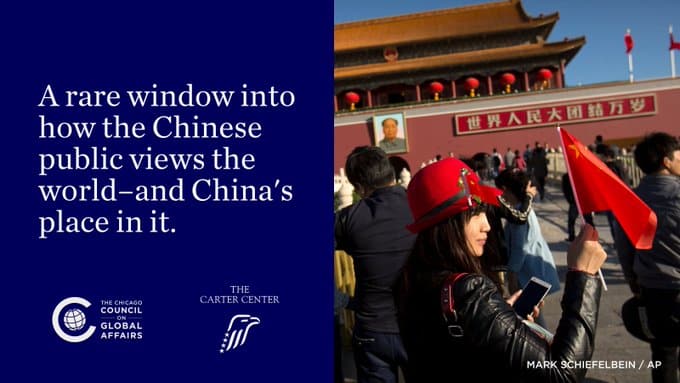Zheng Yongnian on Asia as the Site for World War III
- Analysis
 Juan Zhang
Juan Zhang- 09/04/2024
- 1
Zheng Yongnian, an expert in international relations and the Dean of the Qianhai Institute for International Affairs at The Chinese University of Hong Kong (Shenzhen), recently posted an article titled “World War III and the Asian ‘Powder Keg’”.
In this article, Zheng argues that Asia faces an unprecedented danger of war. He argues that the United State’s strong desire to pivot to Asia and NATO’s strategic shift toward China has destabilized Asia. The United States is using Japan and the Philippines as “proxies” to contain China.
He also pointed out that the signing of a joint defense agreement between Russia and North Korea will further strengthen the ties between Japan, South Korea, and the U.S. Zheng argued that whether in terms of geopolitics, conventional warfare, or nuclear deterrence, the situation in Asia is rapidly deteriorating.
From Zheng’s perspective, how to respond to such a profound geopolitical transformation is the most daunting challenge facing this generation. We translated excerpts from Zheng’s article and will seek experts from both China and the U.S. to respond to Zheng’s view and, most importantly, hear their views on how to maintain peace in Asia and avoid World War III.
Juan Zhang is a senior writer for the U.S.-China Perception Monitor and managing editor for 中美印象 (The Monitor’s Chinese language website).
Below is a selected translation of Zheng’s article.
Asia Becomes a “Powder Keg”
Why Asia? There is extensive discussion on the significance of Asia to the United States (and the West). In their recently published book Lost Decade: The US Pivot to Asia and the Rise of Chinese Power (Oxford University Press, 2024), two heavyweight American foreign policy experts, Robert D. Blackwill and Richard Fontaine, make the point directly. According to them, Asia is important because of the “data” it represents globally and China’s rise. Asia is home to 60% of the world’s population, three of the top five economies, 40% of global GDP, 41% of global exports, 37% of global imports, half of the world’s active military personnel, six of the top ten military powers, five of the nine nuclear-armed nations, and six of the top ten carbon-emitting countries. But more importantly, they argue, is the “continued threat China poses to the international order.”
These figures are hard-earned. Over the past few decades, the Asian region has been the fastest-growing and most peaceful in the world, a miracle in global economic history. The last such miracle occurred in Europe over 30 years before World War I. At that time, Europe also experienced rapid development, prosperity, and peace, leading people to believe that no one would resort to war to solve international issues or use violence (revolution) to resolve internal conflicts. But regardless of how much hope was placed in peace, war happened—not just once, but twice, and both were world wars involving many countries.
Now it’s Asia’s turn. Like the pre-WWI European nations, today’s economic development has accelerated the military modernization of Asian countries. Although economic interdependence has been achieved among Asian countries, even to a higher degree than it was in Europe, Asia’s peace is extremely fragile due to various historical grievances and current conflicts. Beneath the surface of economic interdependence, unprecedented competition exists between Asian countries, and real conflicts between nations often bring historical issues to the forefront. The conflicts among Asian countries provide “extra-regional” powers — namely, the United States — with an advantageous structural condition to dominate Asian affairs. Despite U.S. claims of aiming to achieve peace in Asia under its leadership, the reality is quite the opposite: Asia under U.S. dominance is rapidly sliding toward war.
More importantly, the United States is not actually “extra-regional.” The term “extra-regional” only refers to geography, meaning the United States is located on the eastern shore of the Pacific Ocean. But in terms of interests, the United States is deeply embedded in Asia. Since modern times, especially since World War II, the United States has been deeply involved in Asian affairs—from Japan to the Korean Peninsula, from East Asia to ASEAN. No country is as deeply entrenched in Asia as the United States. Especially since the 1980s, as Asia became the center of the global economy, the United States has increasingly become an Asia-Pacific nation, rather than a traditional Atlantic one. Thus, the United States’ desire to maintain “empire” (hegemony) has organically combined with its actual economic interests in Asia, creating a powerful motivation to sustain its hegemony while reaping substantial economic benefits.
The aforementioned authors, Blackwill and Fontaine, summarize the main reasons for the failure of the United States’ “Pivot to Asia” strategy in their book… Thus, the obvious conclusion is that after a lost decade, the United States must refocus on the Asia-Pacific. As we’ve discussed many times before, since the emergence of the “Indo-Pacific” concept, the United States has already established at least seven “mini-multilaterals” in the region, all targeting China. In various U.S. statements, it is always emphasized that these actions are meant to “contain” potential conflicts caused by China or to “prevent” war. However, experience shows that the direction is quite the opposite: U.S. actions are constructing an overall framework for war, and it is a global framework, at least involving “NATO,” an Asian version of “NATO,” and Asian countries. At the same time, U.S. actions have also triggered rapid strategic adjustments by Russia and North Korea, further shifting “flashpoints” to the Asia-Pacific region.
NATO Turns to Asia
In an effort to draw NATO into Asia or establish an Asian equivalent of NATO, the U.S.-led NATO has actively sought to cooperate with Asia-Pacific countries in recent years. At this year’s NATO summit in Washington, leaders from Japan, South Korea, Australia, and New Zealand, all U.S. allies in the Asia-Pacific region, were once again invited to participate. Since 2022, these four countries, referred to as the “Indo-Pacific Four” (IP4), have consistently been invited to NATO summits. As U.S. Secretary of State Antony Blinken put it, the repeated invitations to these four nations reflect the growing recognition among European and Asia-Pacific partners that their security challenges are increasingly interconnected. “This is a very deliberate part of our policy, to break down the barriers between the European alliance and the Asian alliance,” he said.
Korean Peninsula
The situation on the Korean Peninsula has returned to calm today, but in fact, it is harboring a greater crisis. Since the outbreak of the Russo-Ukrainian war, North Korea has been a staunch supporter of Russia. Russian President Vladimir Putin paid a state visit to North Korea in June this year. North Korea’s ambassador to the United Nations, Kim Sung, told the two countries that “there is no reason to worry about Russia and North Korea signing a mutual defense agreement,” which aims to promote the “development of bilateral relations.” But the West doesn’t think this way and sees this as an “alliance” move.
In general, it is believed that this agreement involves the security needs of both Russia and North Korea, because it may be that Russia feels the pressure on the European battlefield and is trying to reduce the pressure it faces on the European battlefield by directing the focus of conflicts to the Asia-Pacific region. Regardless, the agreement further promotes ties between Japan and South Korea and the United States. The recent news from the United States cannot be ignored. Both the Republican and Democratic parties in the United States have deleted the statement “North Korea’s denuclearization” from their new party platforms. South Korea is naturally concerned about whether the United States has recognized North Korea as a de facto nuclear power. At the same time, according to the New York Times, President Joe Biden approved a highly confidential U.S. nuclear strategic plan in March this year, adjusting the U.S. deterrence strategy for the first time to focus on the so-called rapid expansion of China’s nuclear arsenals.
Challenges for Asian Countries
From the perspective of geopolitical shifts, Asia faces an unprecedented risk of war. Whether it is geopolitics, conventional warfare, or nuclear deterrence, the situation in Asia is deteriorating rapidly. But what is pessimistic is that not only do Asian countries not have enough awareness of this danger, but more and more countries are joining this threatening war game, whether actively or passively. Not only that, nationalist sentiments are growing among Asian countries. Historically, nationalist sentiments have often been an important factor leading to conflicts and wars between countries. In the era of social media, decision-makers in various countries are more likely to be influenced by nationalist sentiments, thereby losing their rationality and making irrational decisions.
China is undoubtedly the “eye of the storm” in this geopolitical turmoil… It is also clear that how to deal with such profound geopolitical changes is the most difficult challenge facing this generation.
The views expressed in this article represent those of the author(s) and not those of The Carter Center.
Author
-

Juan Zhang is a senior writer for the U.S.-China Perception Monitor and managing editor for 中美印象 (The Monitor’s Chinese language publication).









1 Comment
[…] 我们发表了一篇国际问题专家郑永年撰写的文章,他认为亚洲有可能成为引发第三次世界大战的地方。您如何回应他的这一观点?您如何看待美国在亚太地区的角色? […]